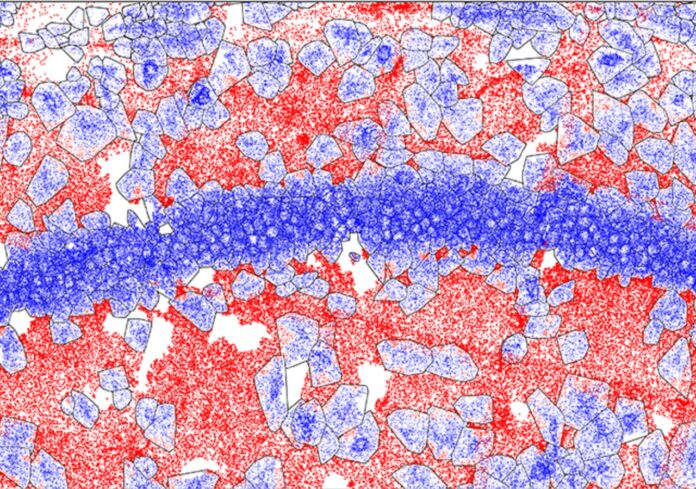In a groundbreaking advancement, scientists have successfully identified the precise locations where thousands of individual proteins are synthesized within intact tissue and single cells. This remarkable achievement provides crucial insights into protein production and distribution processes within living organisms. By pinpointing these protein synthesis sites, researchers can gain a deeper understanding of cellular function and behavior at a molecular level.
Researchers from MIT and the Broad Institute of MIT and Harvard have developed a groundbreaking technique called RIBOmap that allows them to precisely locate and visualize the production sites of thousands of proteins within intact tissues and individual cells. By tracking the mRNA molecules involved in protein translation, RIBOmap provides valuable insights into the regulation of translation within specific cell types and its alterations in disease.
In a study published in Science, the team applied RIBOmap to analyze the translation of over 5,000 genes in mouse brain tissue, uncovering significant differences between mRNA production sites and protein translation sites in various cell types. These findings shed light on cell-specific translation regulation that traditional transcriptomic methods fail to capture. The newfound ability to study translation dynamics with such detail promises to enhance our understanding of protein function in disease and inspire the development of novel treatments.
Xiao Wang, a core institute member and Merkin Institute Fellow at the Broad and an assistant professor of chemistry at MIT, said, “RIBOmap can reveal spatial patterns in translation at a resolution that has never been possible. When we use RIBOmap to look at individual cells within tissues, we can discover how different cell types regulate translation differently.”
Recognizing the limitations of relying solely on mRNA levels as indicators of protein expression, Wang and her team set out to develop a novel tool that directly focuses on translation. Traditional approaches assume a direct correlation between mRNA and protein levels. However, mRNA lifespan and translation rates can lead to disparities.
To address this, the researchers leveraged their previous work on STARmap, a technique for visualizing mRNA organization in intact tissues. They adapted this platform to create RIBOmap, which employs molecular probes with unique barcodes to bind specifically to mRNA molecules engaged in translation.
By analyzing the fluorescent signals generated by in situ sequencing reactions with a confocal microscope, the team could precisely map the location of actively translating mRNA molecules within tissue samples. This breakthrough allows researchers to gain valuable insights into which mRNA molecules are actively being translated into proteins, enabling a deeper understanding of protein expression dynamics at specific cellular locations. With RIBOmap, scientists can unravel the intricate relationship between mRNA and protein levels, shedding light on translation regulation and its implications in various biological processes and disease contexts.
The team tested the efficacy of RIBOmap by mapping protein synthesis sites for 5,413 genes expressed in the mouse brain. Comparing the results with STARmap, they observed instances where high levels of the corresponding mRNA were detected but not actively translated in specific brain regions. This finding suggests that cells in those regions suppress protein translation.
Notably, RIBOmap provided such high-resolution data that it enabled the differentiation of protein synthesis locations within individual neurons, distinguishing between the central cell body and the extended neurites and synapses. The researchers anticipate broader applications of RIBOmap in various tissues beyond the brain, including isolated human tissues, without requiring genetic manipulation.
Looking ahead, they envision using RIBOmap to compare healthy and diseased tissues, assess the effects of drugs on protein production in different cell types or tissue regions, and investigate fundamental cellular mechanisms governing translation regulation. The study received support from multiple sources, including the Searle Scholars Program, the Ono Pharma Breakthrough Science Initiative Award, and the National Institutes of Health.
Journal Reference:
- HU ZENG, JIAHAO HUANG et al., Spatially resolved single-cell translators at molecular resolution. Science. DOI:10.1126/science.add3067.
